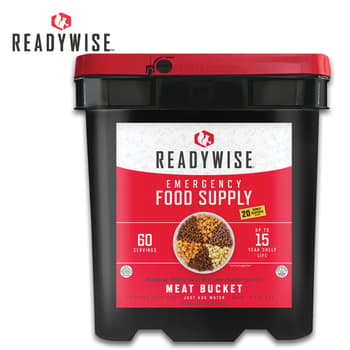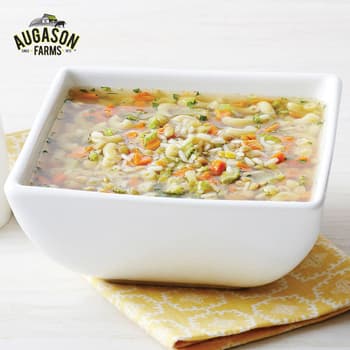Date Published: 2021-04-21
Some Basics on Edible Plants

By Adelia Ladson
Why Edible Plants?
Mother Nature provides an entire produce department as good as any commercial grocery store. People just don’t regularly take advantage of shopping them and that’s a shame because the nutritional products found in Mother Nature’s grocery store are completely free! There are a multitude of “wild” edible plants on this planet, and some have actually been commercially cultivated but a majority have not “taken root” in modern society as anything but weeds or animal fare. For example, blackberries, which grow wild across the world, have been traditionally picked and eaten for thousands of years and are still enjoyed straight off the bramble by many people today, rather than buying them commercially.Below are some edible plants that can be found growing in different climates and parts of the world. Nutritional value is given for each of the edible plants and how each should be eaten.
Found Around Water
Cattail
This green plant produces more edible starch than any other plant that can be found, when foraging, and it can be eaten from top to bottom – even the pollen. Use the pollen like flour and it will add a nutty flavor to a recipe. The starch that can be stripped away from the fibers of the root can be used a variety of ways and it has a sweet taste.- It is native to both North America and Europe and can be found in marshes and around ponds.
- The first sprouts can be eaten raw, and the young shoots can be peeled and also eaten raw.
- The roots can be boiled or roasted like potatoes and the starch chewed or stripped off the fibers.
- Do not eat the fibers in the roots because they aren’t digestible and will cause a stomach ache.
- It has vitamins A, B and C, potassium and phosphorus and it can provide valuable carbs.
Sea Lettuce
The bright-green algae has ruffled leaves that make it look like a leaf of lettuce and the leaves are also perforated with holes. It is known as the “salad green” of the sea vegetables and has a distinctive flavor and aroma. It is most commonly found free floating in tide pools or in areas of exposed rocks.- It is found widely distributed along the coasts of the world and in temperate and colder seas.
- It is eaten raw in salads and cooked in soups but does have a slight bitter taste after it’s cooked.
- It is also be rubbed with sesame seed oil, toasted in a hot pan and served with rice.
- It can be dried and ground into a powder to add to other foods or used as a wrap for cooking.
- It is high in protein, soluble dietary fiber, and various vitamins and minerals, especially iron.
Found in Fields and Pastures
Dandelion
This little “weed” was once thought of as a garden herb and was used for its medicinal properties. It actually belongs to the sunflower plant family and is completely edible from flower to root. The greens have a slight bitter taste like arugula or radicchio and the yellow petals of the flowers are bittersweet.- It is native to Eurasia and North America but has spread worldwide from species imported from Europe.
- The young leaves can be eaten raw or boiled but do grow increasingly bitter after the plant blooms.
- The flowers can be eaten raw in salads, fermented as wine and are often dipped in batter and fried.
- The dried roots can be roasted and ground to use as a coffee substitute or used like any root vegetable.
- It has nutrients including protein, calcium, iron, vitamins A and C, having more than most vegetables.
Clover
An interesting thing about this wild plant is that it is in the pea family, which is evident because its flower actually consists of a bunch of pea-like blossoms. It is completely edible but the leaves, especially, the older leaves are an acquired taste. The young and fresh blossoms have a sweet, anise-like taste.- It is native to the United States, Europe and western Asia but has been used for pastures worldwide.
- The blossoms can be sautéed or eaten raw in a salad but are most commonly dried to make tea.
- The young leaves can be eaten raw in salads but after the plant flowers, leaves should be eaten cooked.
- The root can be treated like a vegetable that would be cooked in soups or stews.
- It has protein, beta carotene, vitamin C, B vitamins, biotin, choline, inositol and bioflavonoids.
Aggregate Berries
Berries like raspberries, blackberries and dewberries are part of the aggregate fruit category, where individual fruitlets are formed on the same receptacle, and are the most commonly familiar berries that can be found growing wild. These berries actually belong to the rose family and are found on brambles.- They are common throughout the Northern Hemisphere and any temperate climate of the world.
- Dewberries are similar in appearance to blackberries and can be eaten raw, in jams or used in baking.
- Blackberries are small, dark berries that contain many seeds and are popular for desserts and jams.
- Raspberries are small, red berries that have become an important commercial fruit crop worldwide.
- They have vitamins C and A, calcium, iron and 25% of the recommended daily dietary fiber.
Wild Onion/Garlic
This plant is in the lily family and can be identified easily in the wild because it looks like an onion and smells like garlic. All of it is edible from the underground bulbs that look like pearl onions to the pink and white bulbils on top. This plant was a staple of the Native American diet.- It is native to eastern North America and has been cultivated other places, including Cuba.
- The underground bulbs can be eaten raw or cooked and used in any recipe requiring onions.
- The raw leaves and stems can be chopped up like chives to use in salads or to season soups.
- The bulbils on top can be eaten raw or cooked and the flowers can be added to a fresh salad.
- It contains vitamins C and A, and is rich in potassium, calcium, manganese and selenium.
Found in the Forest
Chestnuts
These starchy, sweet nuts are popular across the Northern Hemisphere and are a part of the beech family. Roasting chestnuts is the most common way of preparing them in many countries. They have the texture of a baked potato after they are cooked and have a sweet, nutty flavor.- They can be roasted without peeling after they are scored to account for heat expansion.
- They can be dried and ground into flour, boiled like potatoes, steamed, grilled and candied.
- When storing them, they should be treated more like a fruit or vegetable than a nut.
- They are exceptionally rich in vitamin C and starch and are an excellent source of dietary fiber.
Kudzu
Considered a problem in some countries because of its invasive nature, this plant is in the pea family. It is a staple in traditional Chinese medicine and has been used for centuries in East Asia for a variety of things. The leaves, vine tips, flowers and roots are edible; the vines, seeds and seed pods are not.- It is native to Southeast Asia, temperate regions, but has been introduced to other countries.
- The leaves can be eaten raw like spinach, baked in quiches, cooked like collards or deep fried.
- Young kudzu shoots taste similar to snow peas and the stripped roots can be cooked as a root vegetable.
- It also produces purple-colored, grape-smelling blossoms that make delicious jelly, candy and syrup.
- The large roots are full of protein, iron, fiber and other nutrients and the leaves have vitamins.
Bamboo
This plant is actually in the grass family and is some of the fastest growing vegetation in the world. The shoots are used as a vegetable in a variety of Asian recipes and can be found in grocery stores both fresh and canned. The shoots make great appetizers because they stimulate the appetite.- Bamboo is native to temperate climates and tropical climates but has been found in cooler regions.
- Peel the shoots and boil them for about twenty minutes before eating or using them in dishes.
- The sap of the stalks can be fermented to make a sweet wine and the pith of the shoots can be pickled.
- The shoots of bamboo contain a toxin that produces cyanide, but proper processing renders them edible.
- It contains protein, vitamins A, B6 and E, potassium, iron, calcium and is high in dietary fiber.
Found in the Desert
Prickly Pear Cactus
This desert plant is rich in slowly absorbed soluble fibers that may help keep blood sugar stable. It has three different edible sections: the pad of the cactus, the petals of the flowers and the pear. They have become an important part of Mexican cuisine.- As a true cactus species, it is native only to the Americas but has been introduced around the globe.
- The fruit can be eaten after it has been carefully peeled to remove the small spines on the outside.
- The young pads of the cactus can be eaten raw, fried, boiled and sautéed when spines are removed.
- The tart-tasting flower can be eaten in a salad, boiled and also fermented for wine.
- It has a significant amount of dietary fiber, vitamin C, and the dietary mineral, magnesium.



